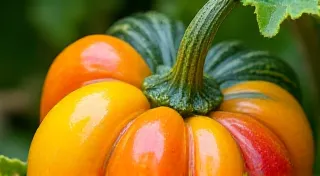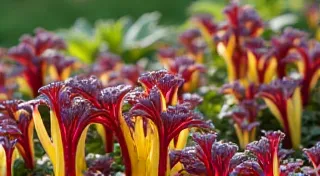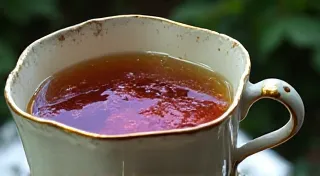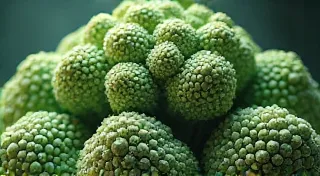Chromatic Echoes: How Vegetable Palette Influences Garden Narrative
There’s a certain melancholy beauty in antique accordions. The tarnished brass, the worn bellows, the faded velvet lining – they whisper stories of bustling marketplaces, smoky dance halls, and the nimble fingers of musicians long gone. They’re vessels of memory, resonating with echoes of a vibrant past. I find a similar resonance in the gardens I cultivate, specifically when I choose vegetables not for their predictable yields or uniform appearance, but for their unusual beauty and vibrant hues. It's a narrative garden, painted not with brushstrokes, but with the amethyst of a purple carrot, the jade of a Romanesco, and the sunset orange of a 'Moon and Stars' watermelon. This isn’t just vegetable gardening; it’s a form of visual storytelling.
For years, I grew the standard fare – the predictable red tomatoes, the uniform green beans. They were perfectly acceptable, certainly productive, but lacked a certain depth, a certain soul. Then, a chance encounter with a farmer at a local market changed everything. He wasn't selling produce; he was presenting a masterpiece. Purple cauliflower, striped beets, yellow bell peppers – a riot of color I hadn't known existed. He spoke of heirloom varieties, of preserving history through seed, and I was captivated.
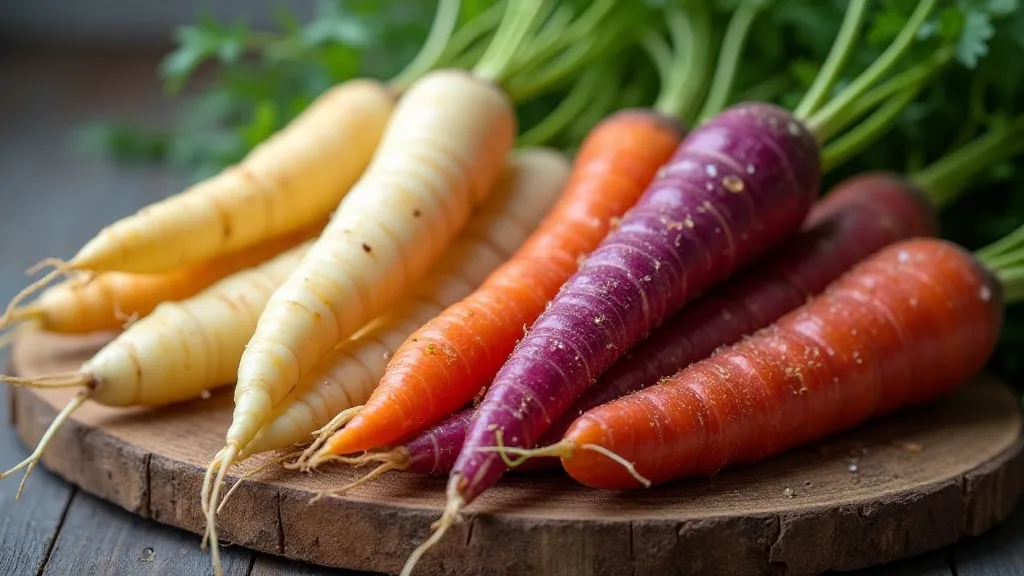
The Language of Color in the Garden
The principles of color theory, so carefully considered by artists and writers, apply just as powerfully to the garden. Warm colors – reds, oranges, yellows – evoke feelings of energy, excitement, and warmth. They draw the eye and create a sense of vibrancy. Cool colors – blues, greens, purples – tend to be calming and serene. They create a sense of depth and tranquility. A garden dominated by bright reds and oranges might feel exhilarating but potentially overwhelming. A garden solely composed of muted greens and purples might be peaceful, but lack dynamism.
Consider the emotional impact of a bed of deep purple Cherokee Purple tomatoes nestled amongst vibrant green basil. The juxtaposition is striking, creating a sense of both richness and freshness. Or imagine the playful contrast of candy-striped Chioggia beets, their concentric rings of pink and white, against a backdrop of emerald chard. It's more than just pleasing to the eye; it's a conversation, a visual poem. The possibilities are truly endless – it’s not uncommon to see vibrant displays using rainbow chard to add a kaleidoscope of color. It’s about thoughtfully layering hues to create a landscape that tells a story.
Heirloom Vegetables: Preserving History, One Seed at a Time
Many of the most unusual and colorful vegetables are heirloom varieties – plants that have been passed down through generations, often treasured for their unique qualities and flavor. Unlike modern hybrids, which are bred primarily for uniformity and high yield, heirlooms often retain a wider range of genetic diversity, leading to a greater variety of shapes, colors, and tastes. They’re a direct link to the past, a living testament to the ingenuity and resilience of our ancestors.
Think of the 'Black Krim' tomato, a deep, almost chocolate-colored tomato with a rich, smoky flavor. It’s a survivor, a variety that has thrived in harsh conditions for centuries. Or the 'Painted Lady' runner bean, its pods splashed with a mesmerizing blend of crimson and cream. These vegetables aren’t just food; they’re history, carefully preserved within each seed. Cultivating them feels like participating in a time capsule, a reconnection with a simpler, more flavorful past. The visual impact alone is worth the effort. Imagine the possibilities of incorporating tri-color chard to further enhance the aesthetic appeal of your garden beds.
The Craft of Arrangement: Designing a Chromatic Narrative
Creating a truly compelling chromatic garden requires more than just selecting unusual vegetables. It demands careful arrangement and thoughtful consideration of the overall design. Just as a painter layers colors to create depth and perspective, a gardener can use color to guide the eye and create a sense of visual harmony.
Consider the principles of complementary colors – colors that are opposite each other on the color wheel, such as red and green, or purple and yellow. Placing these colors near each other creates a striking contrast that enhances their individual brilliance. Experiment with different combinations, observing how they interact with each other and with the surrounding environment. Pay attention to the way light falls on the garden throughout the day, as this will affect the way colors are perceived.
My own garden is a constantly evolving experiment in chromatic storytelling. I'm drawn to the idea of creating pockets of intense color interspersed with areas of calming tranquility. A bed of vibrant purple dragon kale might be placed next to a patch of pale green Romanesco broccoli, creating a visual dynamic that is both stimulating and soothing. It’s a continuous process of observation, experimentation, and refinement.
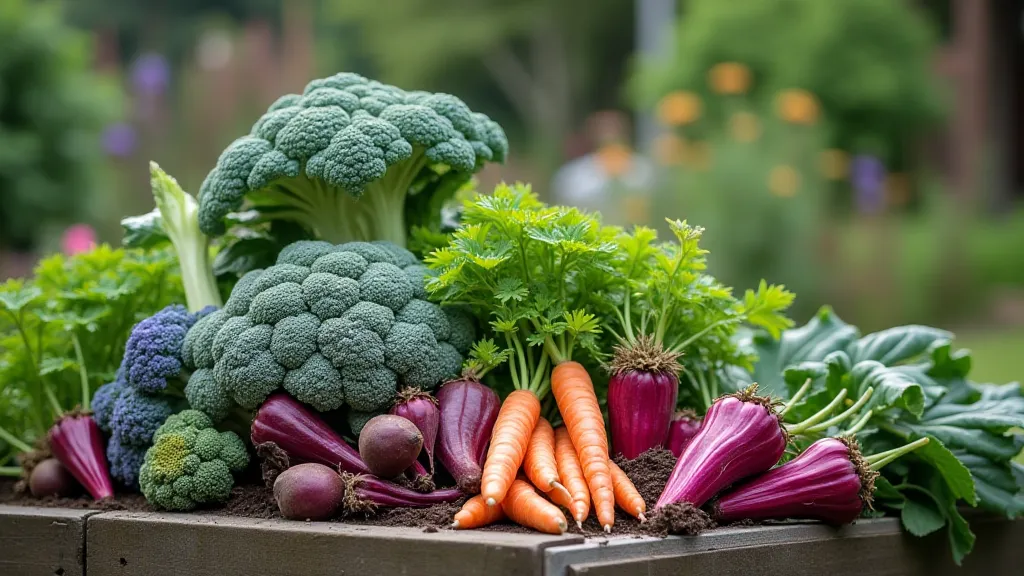
Beyond Aesthetics: Flavor and Texture
While the visual appeal of unusual vegetables is undeniable, their flavor and texture are equally important. Many heirloom varieties boast unique and complex flavors that are far more interesting than their modern counterparts. The 'Moon and Stars' watermelon, with its dark green rind speckled with yellow dots, offers a subtle sweetness that is a delightful departure from the standard watermelon experience.
Don't be afraid to experiment with different textures as well. The smooth, creamy flesh of a purple potato contrasts beautifully with the crisp, earthy bite of a Chioggia beet. Engage all your senses – sight, smell, taste, touch – to fully appreciate the richness and complexity of these remarkable vegetables. A garden is not just a feast for the eyes, it's a celebration of life. Cultivating a vibrant garden is not simply about aesthetics; it’s about rediscovering the bounty and diversity nature has to offer.
Expanding Your Palette: Less Common Choices
Beyond the familiar hues, a world of chromatic possibilities awaits the adventurous gardener. Consider the appeal of plants with unusual coloration, like purple carrots or even purple sweet potatoes, which not only offer stunning visual appeal but also add a depth of flavor often lacking in their orange counterparts. Don’t be afraid to step outside the box – the more you experiment, the more you’ll discover about the incredible range of colors that nature can produce.
Incorporating Structure and Height
Color isn’t the only factor to consider when designing a chromatic garden. The way plants are arranged and the heights they reach all contribute to the overall visual impact. Tall, striking plants like kohlrabi can serve as focal points, while lower-growing vegetables can be used to fill in the gaps and create a sense of depth. Careful planning and attention to detail are essential for creating a garden that is both beautiful and functional. Consider how to best integrate kohlrabi into your design, taking advantage of its unique structure and vibrant color.
The Accordion's Resonance
Restoring an antique accordion is a slow, deliberate process. It involves carefully cleaning each part, replacing worn bellows, and repairing damaged keys. It's a labor of love, a way of bringing a piece of history back to life. There's a similar satisfaction in cultivating a garden filled with unusual and colorful vegetables. It’s about nurturing something beautiful, something unique, something that connects us to the past. It’s about creating a narrative, a visual poem that resonates with the soul. The vibrant hues and unusual forms of these vegetables echo the melancholic beauty of an antique accordion – a reminder of the richness and complexity of life, and the enduring power of human creativity. It's a commitment to preserving beauty, both cultivated and restored, reflecting the lasting legacy of artistry and ingenuity.

